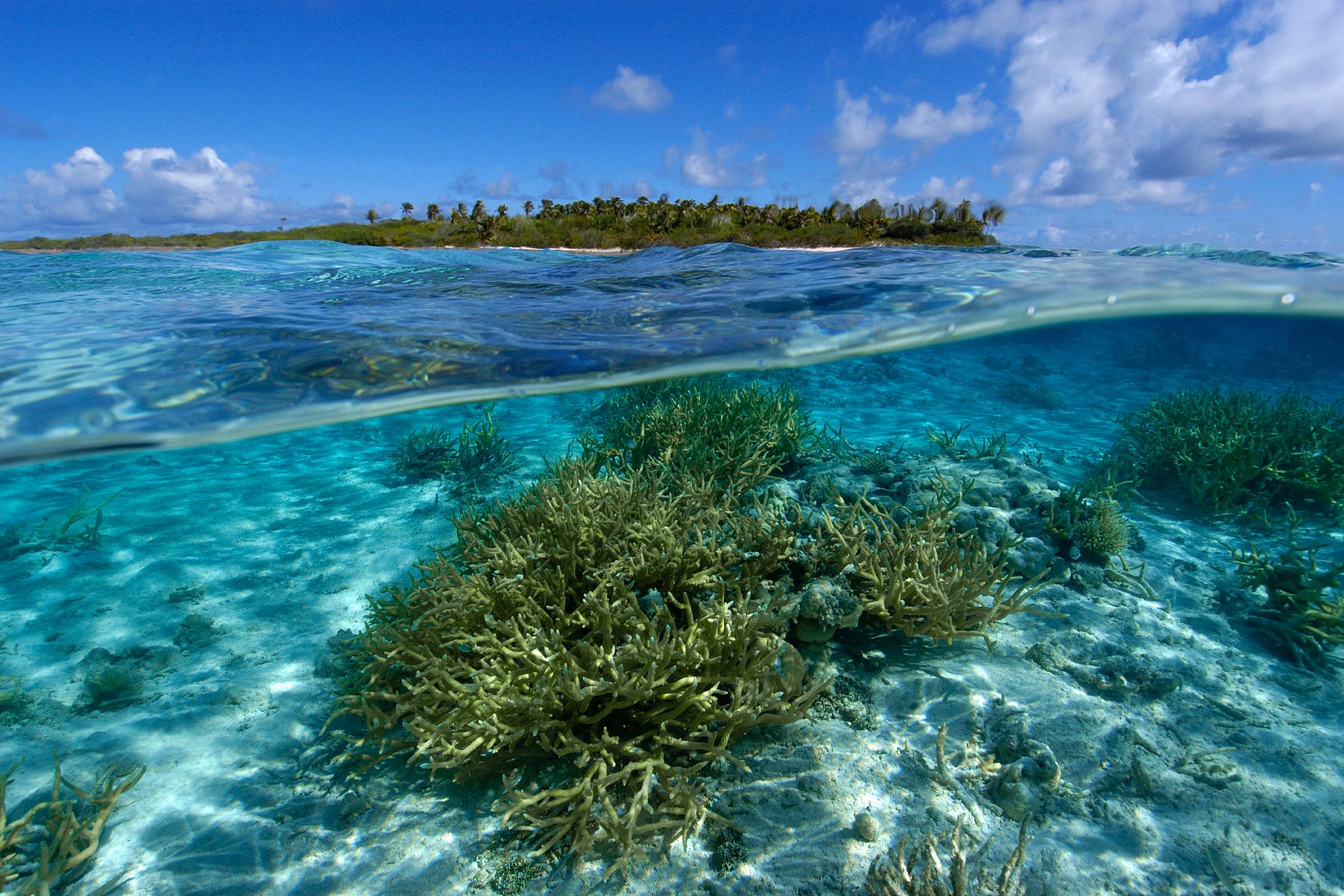This post was updated on December 3, 2021
For an ecosystem that covers 70 percent of the planet, oceans get no respect.
They feed us, provide most of the oxygen we breathe and protect us from the worst effects of global warming. Were it not for the oceans, climate change would have already made Earth uninhabitable.
How?
The oceans have absorbed more than 90 percent of the global warming created by humans since the 1970s. Had that heat gone into the atmosphere, global average temperatures would have jumped by almost 56 degrees Celsius (100 degrees Fahrenheit).
But as vast as the seas are, there is a limit to how much heat they can absorb — and they are beginning to reach it. Conservation News examines some of the ways that climate change affects life in the oceans — and what that means for humanity.
1. Higher temperatures are bad for fish — and for us
Persistently rising temperatures are having cascading effects on marine life. Consider:
For the 3 billion people who rely on fish as their chief source of protein, the prospect of fewer and smaller fish in the sea is bad news.
2. Polar ice is melting
In what has become a dismal annual pattern, wintertime Arctic sea ice continues to dip to new lows as the oceans warm.
Meanwhile, Antarctica is shrinking underwater, as submerged ice is rapidly melting, according to recent studies.
The effects of this warming on iconic species such as polar bears are well-documented. Under the surface, though, the problem is no less urgent. Consider:
- The production of algae — the foundation of the Arctic food web — depends on the presence of sea ice. As sea ice diminishes, algae does too, causing a ripple effect on species from Arctic cod to seals, whales and polar bears.
- Dwindling sea ice results in the loss of vital habitat for seals, walruses, penguins, whales and other megafauna.
- Sea ice is a critical habitat for Antarctic krill, the food source for many seabirds and mammals in the Southern Ocean. As sea ice has receded in recent years, Antarctic krill populations have dropped, resulting in declines in the species that depend on the krill.
What does this mean for us? Impacts to Arctic cod fisheries are having cascading effects, culminating in human-wildlife conflict and food insecurity. A dramatic decrease in sea ice — and seafood — pushes polar bears toward coastal communities and hunting camps to find food, bringing them into closer contact and potential conflict with people.
3. Rising sea levels represent a slow, seemingly unstoppable threat
Climate change poses a dual threat for sea levels.
For one, when land-based polar ice melts, it finds its way to the sea. (Ice that forms in polar seas, on the other hand, doesn’t affect sea levels when it melts.) Second, when water warms, it expands to take up more space — a major yet unheralded cause of sea-level rise.
With sea-level rise accelerating at a rate of about one-eighth of an inch per year, the effects on humanity are plain:
The effects of sea-level rise on wildlife are less explored but no less important:
4. Warming oceans alter currents
Climate change affects ocean temperatures as well as wind patterns — taken together, these can alter oceanic currents.
How does this affect wildlife?
As mentioned earlier, many marine species’ migratory patterns can change as the currents they follow are altered. And many species that depend on ocean currents for reproduction and nutrients will be affected. For example, reef-building coral and reef fish species rely on dispersal of their larvae by currents.
The impacts of changes in ocean currents on humanity could be severe, as currents play a major role in maintaining Earth’s climate. For example, Europe’s relatively mild climate is maintained in part by the large Atlantic current called the Gulf Stream, which is experiencing an “unprecedented slowdown.” Changing these currents will have major implications worldwide for the climate, including changes in rainfall — with more rain in some areas and much less in others — and fluctuating air temperatures. These changes have drastic implications for countless species, including humans.
5. Climate change is affecting the chemistry of seawater
The same burning of fossil fuels that increases greenhouse gas levels in the atmosphere, is also altering the chemical composition of seawater by making it more acidic. The ocean absorbs 30 percent of the carbon dioxide in the atmosphere — and when that carbon dissolves into the water, it forms carbonic acid.
How much does this affect marine life? A lot.
Acidification can dissolve the calcium carbonate shells of marine species such as corals, scallops, lobsters and crabs, and some microscopic plankton that are a foundation of the food web throughout the ocean. These shell-forming organisms provide critical habitats and food sources for other marine life. Increased acidification can also limit the ability of certain fish to detect predators, disrupting the entire marine food chain.
The disruption and destruction of coral reefs and shellfish will have profound effects on humanity, chiefly in the form of less food for people who rely on the ocean for it.
Further reading:
Jessica Pink was an editorial intern for Conservation International. Want to read more stories like this? Sign up for email updates. Also, please consider supporting our critical work.
